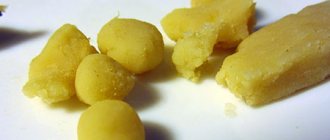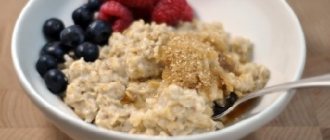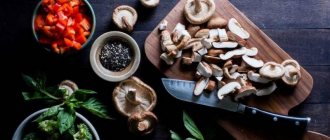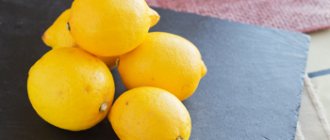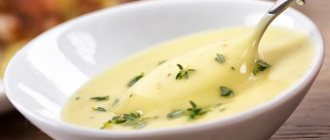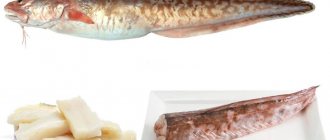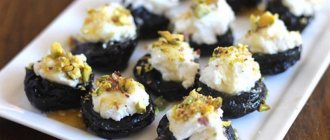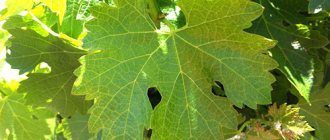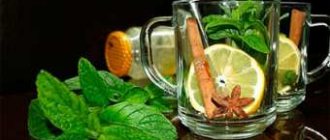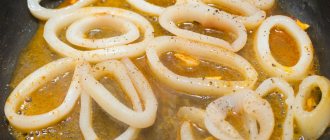Composition and calorie content of lemon zest
Lemon peel is often used to add a special taste to food - it is even used to make candied fruits. However, white fibers are bitter, which is why such dishes are judged to be an acquired taste. In the zest, the unpleasant bitterness is almost not felt.
Calorie content of lemon zest is 47 kcal per 100 g, of which:
- Proteins - 1.5 g;
- Fats - 0.3 g;
- Carbohydrates - 5.4 g;
- Dietary fiber - 10.6 g;
- Water - 81.6 g;
- Ash - 0.6 g.
Vitamins per 100 g:
- Vitamin B4 (choline) - 8.5 mg;
- Vitamin PP (niacin equivalent) - 0.4 mg;
- Vitamin E (alpha tocopherol) - 0.25 mg;
- Vitamin C (ascorbic acid) - 129 mg;
- Vitamin B9 (folic acid) - 13 mcg;
- Vitamin B6 (pyridoxine) - 0.172 mg;
- Vitamin B5 (pantothenic acid) - 0.319 mg;
- Vitamin B2 (riboflavin) - 0.08 mg;
- Vitamin B1 (thiamine) - 0.06 mg;
- Vitamin A (retinol equivalent) - 3 mcg;
- Beta-carotene - 0.007 mg.
Macroelements per 100 g:
- Phosphorus, Ph - 12 mg;
- Potassium, K - 160 mg;
- Sodium, Na - 6 mg;
- Magnesium, Mg - 15 mg;
- Calcium, Ca - 134 mg.
Microelements per 100 g:
- Iron, Fe - 0.8 mg;
- Copper, Cu - 92 μg;
- Selenium, Se - 0.7 μg;
- Zinc, Zn - 0.25 mg.
Mono- and disaccharides (sugars) - 4.17 g per 100 g.
Phytosterols - 35 mg per 100 g.
Fatty acid:
- Omega-3 - 0.026 g;
- Omega-6 - 0.063 g.
Saturated fatty acids per 100 g:
- Myristic - 0.001 g;
- Palmitic – 0.035 g;
- Stearic – 0.002 g.
Monounsaturated fatty acids per 100 g:
- Palmitoleic – 0.001 g;
- Oleic (omega-9) - 0.01 g.
Polyunsaturated fatty acids per 100 g:
- Linoleic acid - 0.063 g;
- Linolenic – 0.026 g.
Lemon zest contains:
- Vitamin C is involved in all redox processes; without it, hematopoiesis and collagen synthesis are impossible. Ascorbic acid strengthens the walls of blood vessels and the overall immunity of the body.
- Choline stimulates the excretion of bile acids and prevents the formation of stones in the gallbladder, helps the liver cleanse itself of toxins, and cleanses blood vessels of cholesterol.
- Folic acid increases the production of blood enzymes, accelerates peristalsis and promotes the production of the “joy” hormone, serotonin.
- Calcium is the main material for the formation of bone structure and a histamine blocker.
- Potassium normalizes acid-base and water-electrolyte balance and improves kidney function.
- Magnesium is responsible for thermoregulation and activates the activity of B vitamins and stimulates the production of enzymes.
- Sodium retains fluid in the body and regulates neuromuscular excitability.
- Phosphorus increases the strength of the bone structure and transfers energy throughout the body.
- Copper increases the elasticity of the walls of blood and lymphatic vessels, accelerates peristalsis, normalizes blood pressure and the functioning of hormonal glands.
Lemon zest adds a special taste to foods and at the same time heals the body. It is very difficult to replace it with artificial flavors; you can feel it right away. Real zest is the taste of freshness.
Clean stains from cutting boards
A neat cook has several cutting boards. Each is designed for a specific type of product. Sometimes keeping them spotlessly clean becomes impossible. Stains still remain on the surface, despite cleaning and washing. Especially when it comes to light or white accessories. To your surprise, the purifier exists. Moreover, it is absolutely safe and non-chemical.
Lemon essential oil and lemon juice contain psoralen, a compound that increases sensitivity to light. Combined with the natural whitening power of sunlight, you can literally whiten stains in just a few hours without any effort. Here's how to do it in your own backyard or balcony.
Benefits of lemon zest
The top layer of the fruit peel is used as a medicine to prevent the development of osteoporosis. But this is not the only benefit of lemon zest for the body.
Let's look at the beneficial properties of the product:
- Prevents age-related changes, normalizes sebum production;
- Accelerates the removal of toxins from the body, has an antioxidant effect, has the most pronounced effect on the liver, removing metabolic products;
- Reduces the production of intestinal gases and eliminates colic and bloating;
- Increases the speed of peristalsis, fights constipation;
- Normalizes the production of red and white blood cells, prevents the development of anemia;
- Reduces blood pressure, restores acid-base and water-electrolyte balance;
- Normalizes the functioning of the cardiovascular system;
- Eliminates nighttime muscle cramps in the lower extremities;
- Increases immune status, prevents infection during the epidemic season, accelerates recovery after damage to the respiratory tract;
- Has a sedative effect, eliminates anxiety and anxiety;
- Has a pronounced antiseptic and antimicrobial effect.
External use of lemon peel eliminates pigmentation and whitens teeth.
Special attention should be paid to the anti-cancer properties of the product. As early as 1970, extensive scientific research was carried out on the properties of the top layer of lemon peel. As a result of 23 experiments, it was found that the complex of beneficial substances of this ingredient destroys 12 malignant strains, including pancreatic, stomach, prostate, breast and rectal cancer.
Is it possible to eat lemon peel
Despite the high content of vitamins and minerals in lemon peel, all the benefits can be displaced due to the danger that lies in the use of chemical processing. This is done for storage and improves the appearance of the fruit. Therefore, to avoid food poisoning and allergic reactions, the product is thoroughly washed with a brush and doused with boiling water.
It’s a completely different matter if citrus fruits grew in your garden, on your windowsill, or if you were delivered fruit grown by your friends. In general, if you have confidence in the environmental friendliness of the product. In this case, the lemon along with the peel is a real storehouse of useful substances for the body. The zest can be eaten, used in cooking, in folk medicine and in cosmetology.
Lemon zest is actively used in cooking. As a seasoning, it is good in baking cakes, muffins, and puddings. And it will add a unique aroma and subtle piquant taste to meat, fish dishes, sauces, and salads. When used skillfully, lemon zest will add light freshness to tonic drinks and cocktails.
Lemon peels are used not only in cooking. Smart housewives have turned the zest into a natural, universal remedy, taking advantage of its antibacterial properties. It is used to clean grease and dirt, as well as to eliminate other household problems.
- The lemon peel is ground and poured with vinegar. After 2 weeks, the mixture is filtered and diluted with water 1:1. The resulting product is universal; it can be used to clean any dirt. Everyone knows that insects - moths, cockroaches, ants, etc. cannot stand the smell of citrus fruits. Lemon peels can be placed in cabinets, on window sills, and near doors, thereby scaring away unwanted guests.
- Unpleasant odors in the refrigerator will be eliminated if you wipe the shelves with a tincture of peels or simply by placing a few peels in different places in the refrigerator.
- Lime deposits on plumbing fixtures or other chrome surfaces can be cleaned without resorting to chemicals. But do this using the same unique lemon peel.
- Tea and coffee stains are removed from glasses using chopped zest.
- The microwave oven is easy to clean thanks to the peel and water. Place the bowl with the ingredients in the microwave for 5 minutes. Using steam, the inner surface of the oven will be cleaned; you need to wipe it after the procedure.
We suggest you familiarize yourself with How to remove tiles from the wall in the kitchen. Spot repair of cladding
Contraindications and harm of lemon zest
When using the product as an ingredient in dishes or as a component of traditional medicine, the possible harm of lemon zest to the body should be taken into account.
There are the following contraindications for its use:
- Allergic reactions, polyvalent allergy. This product is a strong allergen and stimulates the production of histamine.
- Stomatitis, exacerbation of chronic tonsillitis, pharyngitis, peptic ulcer and gastritis with high acidity. The top layer of lemon peel has a pronounced irritating effect on the mucous membrane.
- Heartburn, as the product stimulates the production of enzymes.
Do not overuse flavoring when preparing children's dishes. If you have a history of allergies to citrus fruits, symptoms will also occur to the zest.
Remove dust from your home easily
Dust removal is many people's least favorite home cleaning chore. Indeed, after just a few minutes, dust particles reappear on the surface, minimizing the efforts made. But with new dust wipes, this process will seem much more pleasant to you.
Ingredients:
- Olive oil;
- Lemons;
- Rags;
- White distilled vinegar;
- Water.
Preparation:
- Peel 3-4 lemons.
- Mix equal parts water and vinegar.
- Add a couple drops of olive oil.
- Soak the rags in the solution until completely saturated.
- Wring out the rags, leaving them damp.
- Lay out the rags and place a couple of lemon zests on each cloth.
- Roll and place in a glass container.
- Add some lemon zest and make sure the lid is tightly closed. Store until needed.
- After use, wash the dust cloths and prepare a new batch!
How to prepare lemon zest
In order to prepare lemon zest, the citrus peel is thoroughly washed and immediately blotted with a paper towel so that excess moisture is not absorbed. Leave the fruit to sit for a while to dry.
There are several ways to remove the zest from a lemon:
- Vegetable peeler
. Use only for thick-skinned lemons. If the peel is thin, you can touch the bottom white layer and the zest will taste bitter. - A thin sharp knife
. This method is preferred if you plan to first add the zest to the dish for flavoring and then remove it. - Using a fine grater
. The method is the simplest. You can grate the zest as much as you need without affecting the bottom layer. This product is added to baked goods and used to decorate desserts and drinks.
If the zest is needed only for decorative purposes, zester is used to cut it.
This is a special knife for peeling citrus fruits. The stripes turn out beautiful, even, rolled into rings, like a serpentine. The choice of accessory for receiving the product depends on the purpose of application.
Leave your feet smooth and silky.
Lemon juice is a cool ingredient to make a homemade exfoliating scrub to achieve super soft feet. It's convenient to use just before shaving and will help combat dryness and itching in winter. If you've never tried this before, we highly recommend it!
Ingredients:
- 1/2 tbsp. oils (any oil, coconut oil, baby oil, canola oil, etc.);
- 1 1/4 tbsp. Sahara;
- 3 tbsp. l. citrus juice (lemon or lime).
Leave your feet smooth and silky.
Preparation:
- Mix all ingredients in a glass jar and shake well.
- Transfer to a plastic bottle with a thin opening (cosmetic) for ease of application.
- Place your feet in a bowl, pour the mixture over them, and leave for 5 minutes. Then rub the mixture in with massaging movements.
- Enjoy the results: the abrasiveness of the sugar removes all dirt and dead skin, the lemon juice acts as a gentle exfoliator of the skin, the olive oil penetrates deep into the skin and provides long-lasting hydration.
Recipes with lemon zest
Perhaps there is no type of food for the preparation of which lemon zest would not be used. It is introduced into desserts and used to prepare meat, fish, and sauces. Simple desserts with this ingredient can compete with complex baked goods.
Dishes with lemon zest:
- Candied lemon peels
. The dish is very simple both in preparation and in the number of ingredients. Melt sugar in a saucepan by adding a few tablespoons of water. The less water, the better, the crispier the “sweets” will be. Cut the zest with a thin knife, dip into boiling syrup and cook for about 30 minutes. The readiness of candied fruits is judged by their appearance - pieces of peel will become almost transparent. They are taken out, placed on a sieve to get rid of excess syrup, and allowed to cool. After about 20 minutes, sprinkle the pieces with powdered sugar and leave to dry. You can store it in a closed, dry container, but this is difficult to do. The dessert is too “sticky” and is usually eaten in one sitting. - Marinade for chicken and turkey meat
. Add a quarter cup of lemon juice, 2 cloves of crushed garlic, a teaspoon of dried rosemary and thyme, and 2/3 teaspoon of lemon zest to half a glass of olive oil. Mix everything thoroughly and cool in the refrigerator overnight. - Lemon zest pie
. If you don't have time to fuss with the cake, you can quickly bake a lemon pie. Beat 100 g of butter with a quarter cup of sugar, add 2 eggs, a tablespoon of lemon zest, a teaspoon of vanillin, half a glass of flour and a tablespoon of baking powder into the oil mixture. Bake like lemon cake. At the same time, the cupcake increases in size by 2-3 times and rises. Decorate with mint leaves. - Spicy sauce
. In a ceramic bowl mix: 12 tablespoons of olive oil, 6 tablespoons of lemon juice, 16 stalks of green onions and 100 g of fresh parsley, a little more than a glass of date pulp, 4 teaspoons of lemon zest, some pine nuts. The greens and date pulp should be chopped very finely, and the nuts should be ground into powder. Mix everything well, add salt to taste and add pieces of habanero pepper. Refrigerate thoroughly before serving. - Marinade for fish
. To prepare this recipe with lemon zest, you need to take 1 tablespoon of zest, so you may need 2 lemons. It is enough to squeeze the juice from half a citrus. Mix 2 tablespoons of white wine and lemon juice in a ceramic bowl, add lemon zest, a teaspoon of crushed tarragon and 2 teaspoons of tarragon or wine vinegar, 1 crushed clove of garlic. Add half a teaspoon of black pepper powder to the cooled marinade and mix again. Pieces of fish are marinated for at least 3 hours. To finish cooking the fish, you can bake it on the grill or in the oven, in foil or parchment. The latter cooking method is more successful - it will become very juicy and acquire a delicate taste. - Beef with zest
. Starchy white rice, 5 tablespoons, washed, soaked in cold water, boiled until tender without seasonings or salt. Beef, 300 g, cut into thin pieces, fried in olive oil. Add 2 crushed garlic cloves and 2 tablespoons of lemon zest into a frying pan and fry until crisp. At this stage, add a teaspoon of thyme, marjoram and white pepper powder, and add sea salt. Add a little water to the same frying pan and bring it to readiness over low heat. Large orange bell peppers are cut into ribbons, fried separately in olive oil for 3 minutes, and then simmered for 10 minutes by adding water. Serve: a bed of rice, pieces of meat surrounded by bright ribbons of pepper. The dish is beautiful and tasty. - Cake with lemon zest
. Calculation of products for 4 cakes. Beat 6 eggs with sugar. You need 1.5-2 cups of sugar, depending on the size of the eggs. When the egg mixture becomes very light, almost white, add 2.5 cups of flour and 1 teaspoon of soda, slaked with apple cider vinegar. Bake the cakes on a baking sheet covered with parchment. The oven is preheated to 180°C and each cake is baked for 15-20 minutes. Check readiness with a toothpick, as with regular biscuits. If the end of the toothpick removed from the dough is dry, you can remove it. While the cakes are cooling, whip the cream: combine 2.5 cups of sour cream with 2 cups of sugar, adding a teaspoon of vanillin, the zest of 1 lemon and lemon juice to taste. To whip better, the sour cream should be cooled. The cakes are coated with cream, the cake is formed, and put into the refrigerator for soaking for 4-5 hours. - Lemon zest jam
. For jam, 200 g of zest is cut with a thin knife, cut into equal pieces and soaked in cold water for 2 days. The water is changed every 8-10 hours. There is no need to thoroughly rinse the pieces; just add clean water to the desired volume. Then the peels are thrown onto a sieve, rinsed under running water, filled with clean water and boiled for 10 minutes. At the same time, set the sugar syrup to boil: 1 liter of water - 600 g of sugar. The boiled peels are thrown back onto a sieve, then dipped in syrup and simmered over low heat until the syrup thickens. The finished pieces of zest become transparent.
Drink Recipes:
- Refreshing tea with lemon zest
. The antimicrobial effect of the drink is the same as tea with lemon juice. Has a diuretic and laxative effect. Boil 0.5 liters of water in a saucepan along with the zest of 1 lemon. After 15 minutes, remove the container from the heat, allow to cool to approximately 40°C and add honey for taste. If the goal is to fight a cold, then it is better to add ginger to the composition. - Tincture of lemon zest with mint
. Remove the zest from 3 lemons with a grater, finely chop 150 g of fresh peppermint leaves and pour everything into a regular half-liter bottle of vodka. Seal the neck with a stopper and put the container on a shelf in a closet for a week. There is no need to take it to the pantry, as you need to shake it 3-4 times a day. When the tincture is ready, make a cotton-gauze filter: the gauze is folded into 4 layers, and a layer of sterile cotton wool is placed between it. The liquid is decanted and poured into a clean bottle through a funnel. Can be stored at room temperature.
If you add lemon zest to baked goods and do not overuse desserts, a fat layer will not form. Metabolic processes are accelerated, and breaking the diet does not produce any harmful effects on the body.
Clean kitchen surfaces
The kitchen is a place where fat deposits accumulate. They are easy to clean up when they are fresh. But it is much more difficult to remove dried ones. In an unequal struggle, lemons will come to the aid of a person. Use these citrus fruits to make two homemade cleaning products at once—an enzyme cleansing spray and a scrub! Enzyme scrub for washing works amazingly. After using it, the sink is clean and sparkling, and it smells so fresh!
Required:
- 300 g lemon slices;
- 1 tsp. yeast;
- 100 g sugar;
- 1 liter of water;
- 2-liter plastic container.
Clean kitchen surfaces
Preparation:
- Pour sugar into the bottle using a funnel.
- Cut the lemon into small pieces and pour into the bottle.
- Add yeast.
- Fill with water.
- Screw the cap on tightly and dissolve the sugar by shaking the bottle for about 30 seconds.
- For the next two weeks, shake the bottle once a day, making sure to keep the bottle cap loosely closed to avoid gas build-up (and explosions!)
- When you are finished adding and dissolving the ingredients, write the date on the bottle. It will take two weeks for the ingredients to ferment (or three months if you're not using yeast).
- Once the cleaner is ready, start by straining the liquid enzyme cleaner into a bowl and set it aside for later. After straining, grind the remaining pulp in a blender. The result of grinding will be a cleansing scrub.
Use in everyday life
I would like to note that today, the benefits and harms of lemon zest are appreciated by cosmetologists. Due to the presence of antioxidants in the product, it allows you to successfully cleanse the skin of acne and pimples. In addition, it is often used to remove age spots, as it has a whitening effect. Dermatologists also use the peel to treat skin diseases.
Insect pests
The essential oils contained in the peel have a negative effect on insects. If there are ants, fleas or cockroaches in the house or area, place the zest in the cracks, on the window sills, next to the baseboards.
By placing lemon peels in the refrigerator, you can get rid of unpleasant odors and refresh the aroma.
Stains on dishes
Lemon zest effectively removes grease and tea stains on cups and plates. Grate the peel on a fine grater and apply to dirty places, then wash the dishes in a convenient way.
Place the peel in a plate with water, set the timer for 4-5 minutes, after boiling the steam will break down fat and eliminate odors. All you have to do is wipe the microwave with a damp cloth.
